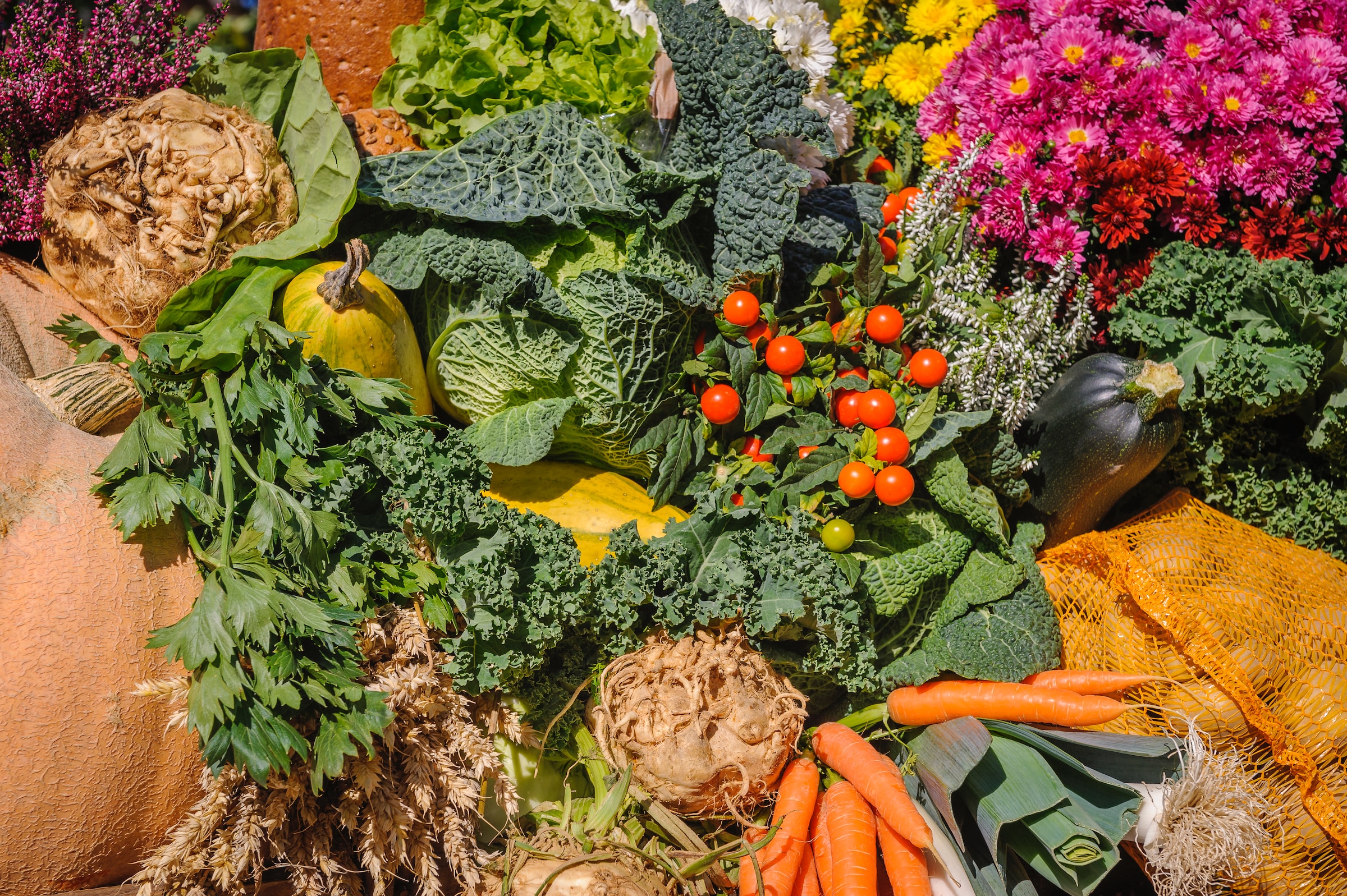The fall season is upon us! And with it comes Saturday football, crisp mornings and, of course, pumpkin! PSLs anyone? As we transition into autumn, a cornucopia of fall foods becomes available at our local farmers markets and grocery stores. As a dietitian and foodie, I can’t help but feel inspired by the abundance of seasonal fruits and vegetables. These foods are full of antioxidants and phytochemicals that promote health and fight disease!
SQUASH
(Pumpkin, Butternut, Acorn)
Squash are undoubtedly the quintessential fall vegetable (technically fruit). Their versatility in cooking transitions them wonderfully for both sweet and savory recipes. With their orange hues, these popular squash offer more than just good taste. One of the most well known compounds in squash is beta-carotene. Beta-carotene is a precursor to vitamin A, meaning the body converts it to retinol, the active form of vitamin A. Beta-carotene is also a phytochemical belonging to carotenoid group of pigments found in red, orange and yellow fruits and vegetables. Its antioxidant properties protect our eyes from age-related vision problems, protect our skin from UV damage and enhance immunity. Our body’s absorption of carotenoids increases when these foods are cooked. Pumpkin and other fall squash varieties are great sources of complex carbohydrates, dietary fiber and numerous other vitamins and minerals. Don’t forget about the seeds! Pumpkin and squash seeds can be roasted and used to top salads. The seeds are a great source of heart healthy fats.
CRUCIFEROUS VEGETABLES
(Brussels sprouts, Broccoli, Cauliflower, Cabbage, Turnips)
Cruciferous veggies come from the Brassica plant family and are famous for their cancer fighting properties. Many people have aversions to these veggies because of their strong odor. This characteristic is a result of sulfur-containing compounds, glucosinolates, which are abundantly found in these foods and give them their anti-cancer reputation. Once broken down, glucosinolates yield phytochemicals that are biologically active and can interfere with the growth and formation of cancer cells. Indole-3-carbinol and isothiocyanates are two glucosinolate metabolites with powerful antioxidant activity. Isothiocyanates have the capability to destroy and eliminate carcinogens before they have the chance to damage DNA. Cruciferous veggies are also high in vitamin C (more so than oranges!) and vitamin K.
Should you eat them raw or cooked? I recommend eating them however you enjoy them. While raw cruciferous vegetables are shown to have higher amounts of phytochemicals, they still retain a large amount of nutrition when cooked. Cooking methods such as steaming or lightly sautéing will help to preserve nutrition.
BEETS
Beets are increasing in popularity, popping up on more restaurant menus and dinner tables all the time. These ruby red roots tout numerous cardiovascular benefits. Beets are high in nitrates, which are converted to nitrites and finally to nitric oxide in the body. Nitric oxide plays a role in dilating blood vessels, thus increasing the efficiency of oxygen delivery throughout the body. Consumption of beets and concentrated beet juice products has become trendy for athletes trying to increase performance. There is also evidence to support that the consumption of dietary nitrates lowers blood pressure. Beets contain vitamin A, vitamin C, dietary fiber and carotenoids. Roasted beets are delicious with a drizzle of olive oil, balsamic vinegar and a sprinkle of goat cheese! Don’t toss the beet greens — they are rich in folate and vitamin K! Sauté your beet greens in olive oil with garlic and onion.
Betalins, the natural pigments in beets, cause about 10–14 percent of the population to have beeturia (red or pink urine). While this can be frightening the first time you eat beets, it’s harmless.
Enjoy this cornucopia of fall foods this season! Mix and match flavors and have fun. Happy fall!
Related articles
Make Butternut Squash A Fall Produce Staple!
Satisfy Your Dessert Cravings With Fabulous Figs
6 Of Our Favorite Slow Cooker Soup Recipes

